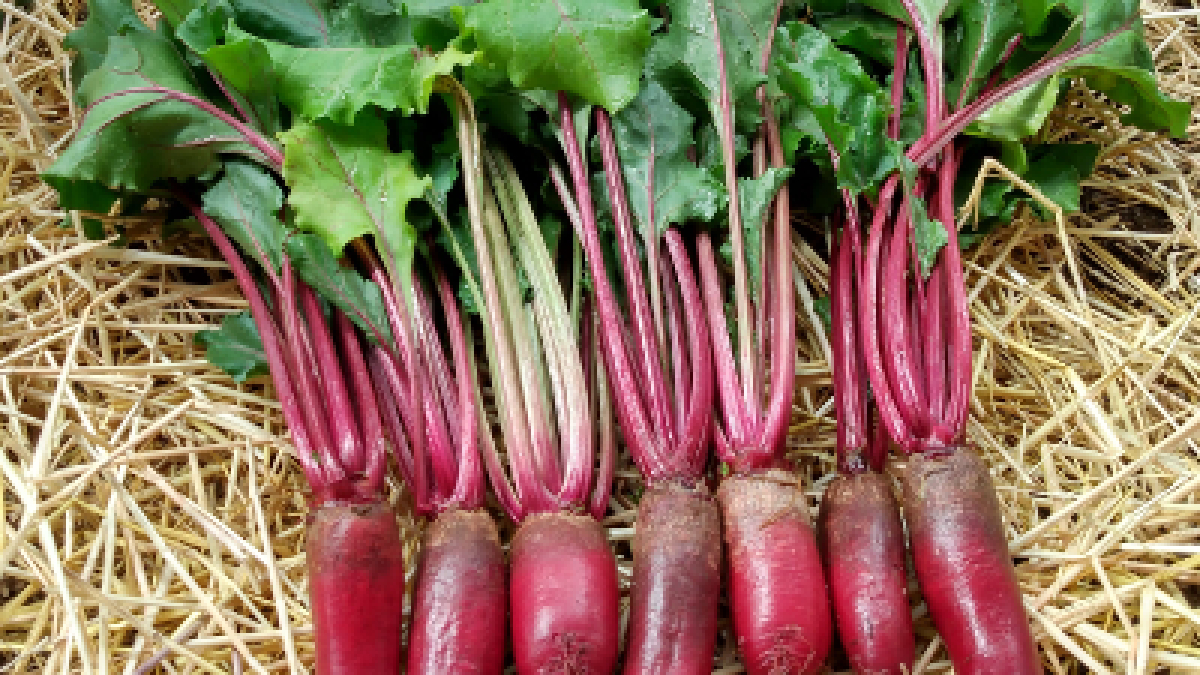BEETS
 All root vegetables grow very well here. They all like the cooler temperatures and can be grown from early in the spring until late in the fall, after some freezing has occurred. Little by little my culinary skills are beginning to match my gardening skills with root vegetables, and beets are no exception. Roasted, sweet beets are delicious, and the cold leftovers are great on salads. For a quicker result, I’ve also been cooking them in my Instant Pot, and they do very well there also.
All root vegetables grow very well here. They all like the cooler temperatures and can be grown from early in the spring until late in the fall, after some freezing has occurred. Little by little my culinary skills are beginning to match my gardening skills with root vegetables, and beets are no exception. Roasted, sweet beets are delicious, and the cold leftovers are great on salads. For a quicker result, I’ve also been cooking them in my Instant Pot, and they do very well there also.
For the largest beets, start them indoors in soil blocks around April 1-15 and transplant to the outdoor garden around May 1-15. Keep them covered with frost cloth over the top of the plants and plastic sheeting over the hoops until it stops snowing and freezing, around the end of May. A little snow or frost after that doesn’t hurt them–by that time they are bigger and able to withstand it. A second planting of beets may be started indoors in blocks or outdoors in the ground around mid-May or June 1. If they’re started any later than the end of June, they don’t reach a good size before the ground freezes in the fall. After harvest, our beets are stored in our root closet located in our standing crawl space. Throughout the winter it’s kept around 37 degrees.
BEET PESTS
Our second year here the beets were attacked by leaf miners. The leaves were all shriveling up, and after research I realized it was leaf miners. I could see their eggs on the backs of the leaves. Leaf miners are attracted to beets, spinach and swiss chard, and all these were affected to some degree in my garden. After trimming off all the infected leaves and spraying what was left of the plants with neem oil spray, the plants survived and the beets did grow to a decent harvestable size. The next year I was careful to plant beets, spinach & chard in beds that had not had them the previous year, and I was much more proactive about keeping them sprayed with neem. The beets remained in much better condition, with only a few that appeared to be affected by leaf miners. I read that leaf miners breed in the soil and that some beneficial nematodes should keep them under control. I did apply the beneficial nematodes that were supposed to control leaf miners, but they were not controlled entirely. A nice article explaining leaf miners can be found at the Laidback Gardener.
BEETS IN THE GREENHOUSE
I have attempted to grow some beets in the greenhouse as well, but it takes them a long time to reach harvesting size. Since beets grow so much better outdoors and store for a reasonably long time, I have no real reason to grow them in the greenhouse.
BEET STORAGE
Beets can withstand light freezing or frost, and are left in the ground as long as possible, until the ground is about to freeze.
At that time, the beets are harvested; the greens are cut off to about 1/2 to 1″ from the root. Our beets are stored in our cold closet, and keep several months. I like to rinse off the soil and store them in plastic bags, which are left a bit open to allow for some ventilation. I find that they do not keep as well when not in bags.
BEETS GROWN HERE
All of the following beets have been grown here with great results:
Early Wonder (45 Days) | DTH*
Merlin F1 (48 Days) | DTH* 69-90 Days – These are one of my favorites.
Cylindra (56 Days ) | DTH* 69-90 Days – Very nice, cylindrical beet. These are one of my favorites.
3 Root Grex (54 Days) | DTH* – These have beautiful colors ranging from yellow to orange to pink to purple. They typically take up to a month longer to reach harvestable size over most of the red beets, and the greens are larger and tougher than the red beets.
Detroit Dark Red (56 Days) | DTH*
Detroit Golden (55 Days) | DTH* 96 Days (Started late, harvested late)
MacGregor’s Favorite (65 Days) | DTH*
*DTH = Days to Harvest, from date of transplant outdoors. I don’t always remember to write down the dates harvested. Dates shown are only those I have in my records.
- Laurie
- Revised January 2024

